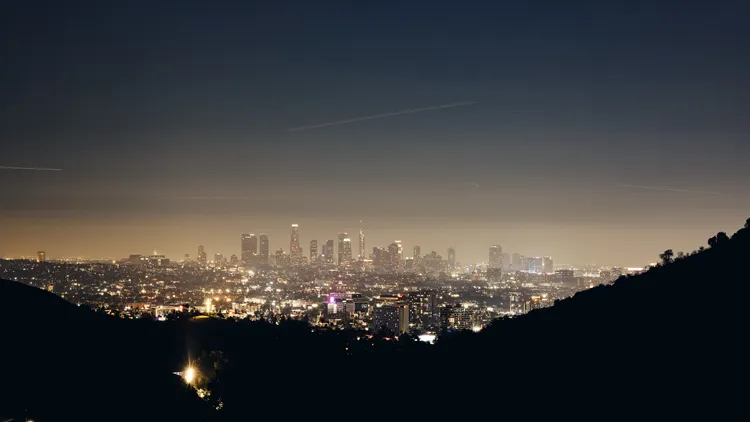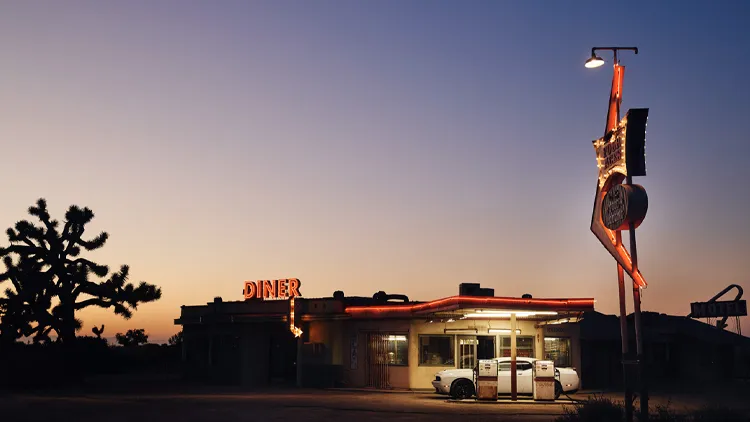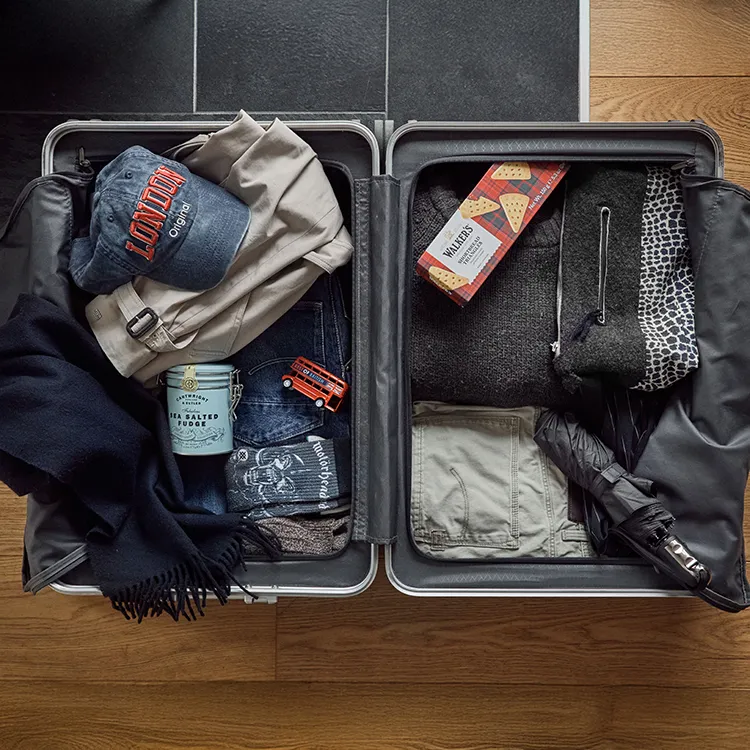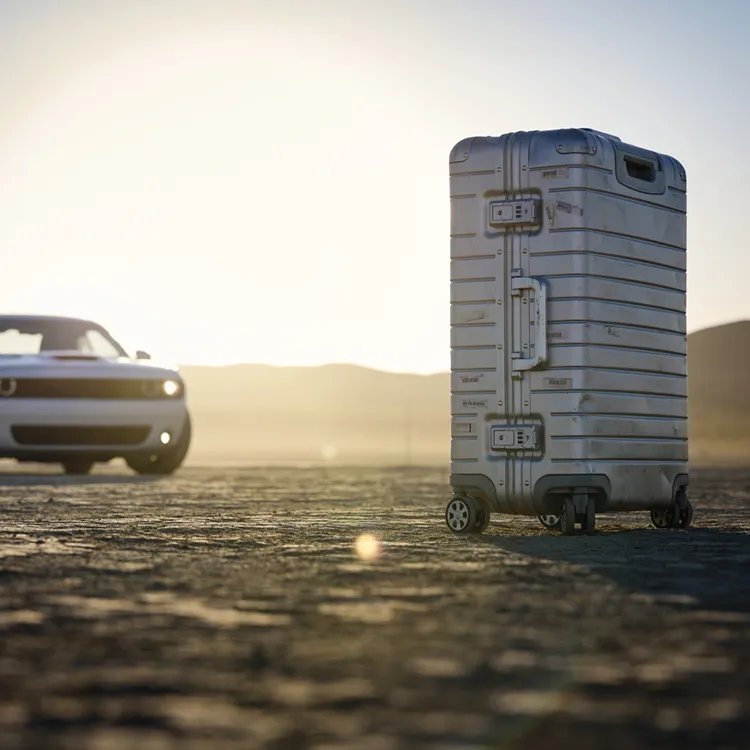Wie der weite Westen der USA zur schillernden Bühne wurde
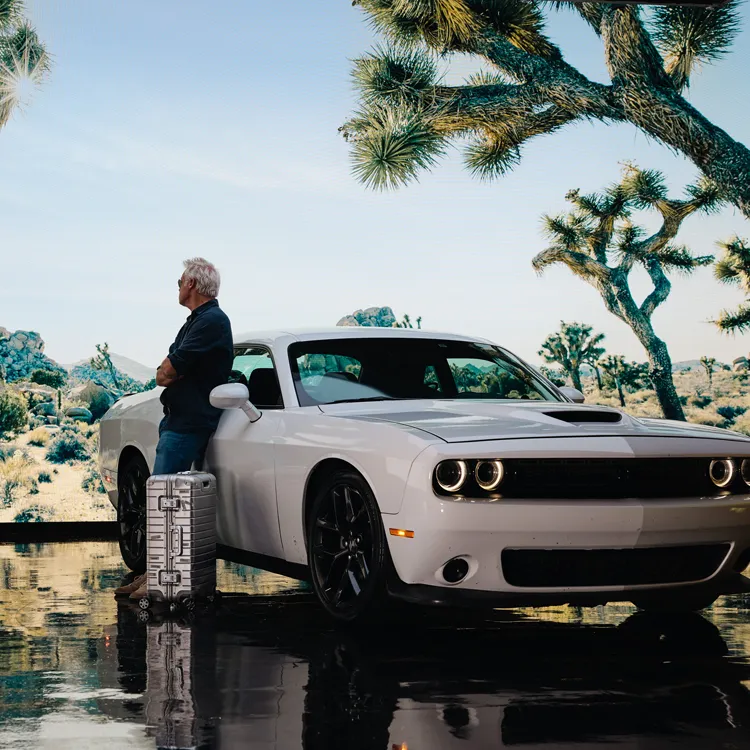
Ein Sonntagmorgen in Los Angeles. Mark Escribano parkt einen weißen Dodge Challenger vor der Marsoberfläche. Rote Steine liegen im Bild, im Weltall schwebt ein blauer Mond. Escribano fegt den Boden, verdunkelt die Bühne. „Von mir aus kann’s losgehen“, sagt er. „Sieht super aus.“
Escribano kann so ziemlich alles super aussehen lassen. Superecht, superschön, superscharf. Die Welt als Kulisse, jede denkbare Umgebung als perfektes Trugbild. Mal kosmisch überhöht, mal von der KI generiert, mal eingespielt als wohltemperiertes Abbild der Realität. Escribano blendet die Szenerien einfach ein.
Das Spiel mit der Illusion ist sein Geschäft. Er ist der leitende Produzent von Standard Vision, einem sogenannten LED-Volumen. Im filmtreibenden Westen der USA ist das der letzte Schrei in Sachen Kulissenzauberei. Was früher Bühnenbild und aufwendiger Setbau waren, erledigen heute riesige LED-Bildschirme. Und auf diesen Projektionsflächen kann so ziemlich alles laufen.
Escribano könnte hawaiianische Monsterwellen erscheinen lassen, die Straßenschluchten Tokios, eine bayerische Voralpenlandschaft im zarten Morgennebel. Die Realität in Form traumhafter Bühnenbilder – bis die Grenzen zur Fiktion verwischen. Virtual Reality, Augmented Reality, Extended Reality, Mixed Reality heißen die Zauberworte. Mithilfe der neuen Technologien werden Umgebungen optisch eingefangen, digital erzeugt und beliebig modifiziert – Kunstwelten, vor deren Hintergrund sich jedwede Geschichte erzählen lässt.
Darum geht es: perfektes Kino. Fast täglich wird im Studio gedreht. Filmszenen, Werbung, Musikvideos. Autos, die durch die Wüste preschen. Kühlschränke, die durch den Weltraum schweben. You name it. You get it. Die Black Crowes haben hier schon ein Video produziert, der Kultregisseur Wes Andersen Sequenzen gedreht.
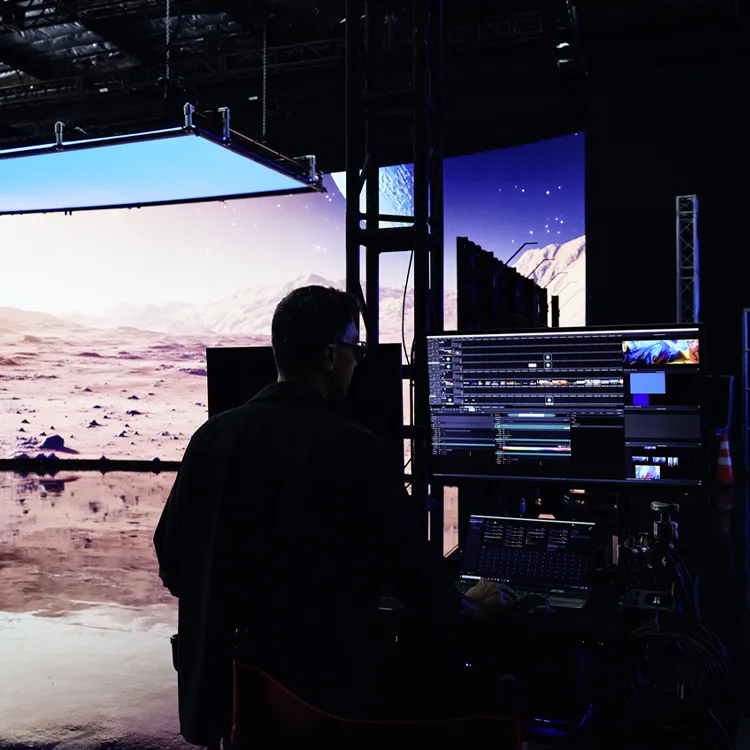
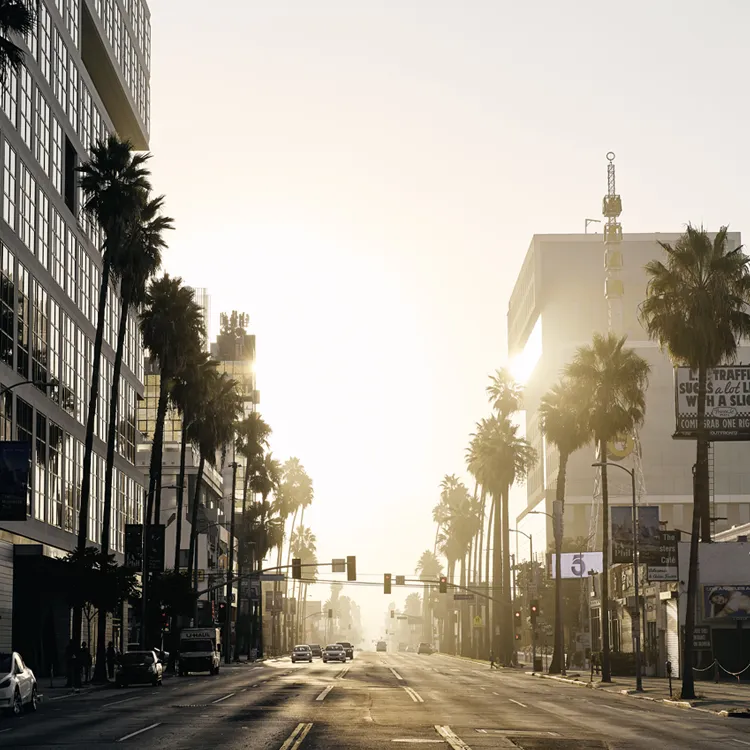
Projecting the possible and the impossible has always been Hollywood’s core business and that of its satellites. Selling big dreams is what they do. The summer sun blazes down on Los Angeles outside the studio gates. California is Earth’s biggest illusion-making machine. And the gateway to the American Southwest – the greatest storyteller the world has ever seen.
Playing with illusion and reality is an age-old game. What is and what appears to be merged into one. But, hey: ‘There’s no business like show business!’
That’s something they certainly know about in the American Southwest. And why there’s so much more between the Pacific and Las Vegas, between Hollywood and the desert than sensational cinema. Nowhere is the American Dream more American than here. Nowhere is the sky wider, nor does the land stretch out more extravagantly beneath white clouds. The endless road, the rumble of engines, those supersized cheeseburgers!
The American Southwest is the mother of all clichés, the queen of backdrops. The world’s most cinematic landscape has shaped our dreams. Where, if not here, is our concept of unfettered freedom so boundless? And ringing in our ears, the soundtrack: ‘Life’s a road movie, honey!’
All that remains is to jump into a car and hit the accelerator yourself. Think that’s surreal? Think again. Your windscreen will soon morph into a movie screen, the world into a projection surface.
The great open spaces begin just past San Bernardino, the legendary land between the desert and Vegas. Mile-long freight trains thunder across the prairie, silver semis traverse the cactus-studded wastelands between the Colorado River and the red-hot Canyonlands.

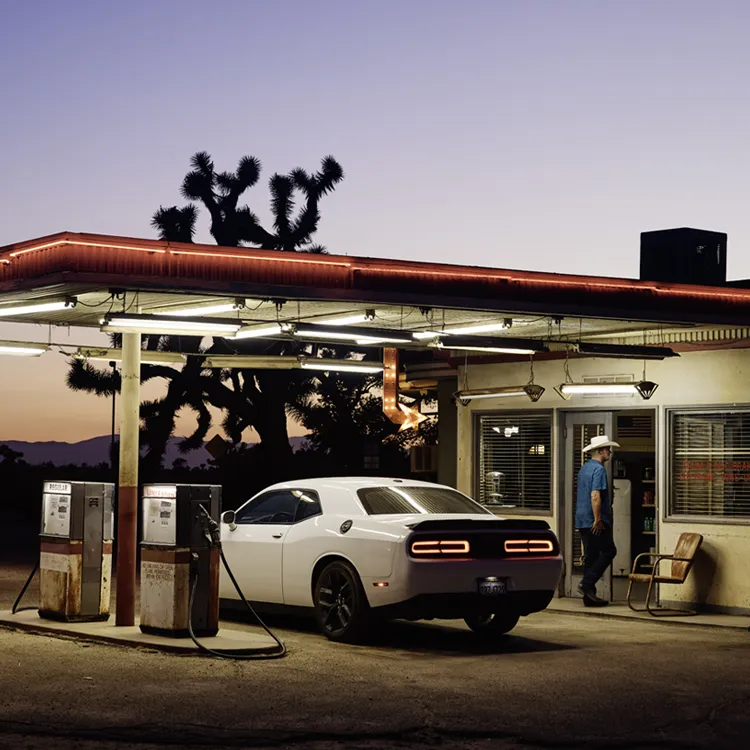
Casinos jingle in the middle of the desert, cowgirls dance. You spot petrol stations with a hundred pumps, stations with UFOs suspended beneath the ceiling and a 10-metre-tall likeness of Peter Fonda with fiery eyeballs. That’s the Southwest: a place where no story is too fantastic, no script too audacious. Where whole genres have been invented – partly because they wouldn’t have been conceivable anywhere else. The Western, the road movie. Tarantula, Pulp Fiction.
The real world has also been a blueprint for countless fantasies. Augmenting it was hardly necessary. Its sheer presence is enough to make the most remarkable stories burst out of the ground.
Who hasn’t been up to all kinds of adventure here? Buffalo Bill, Easy Rider, Indiana Jones. Former racing car driver Kowalski, tearing through rattlesnake country. John Wayne and James Dean, Hopper and Tarantino: they all came and succumbed to this crazy backdrop of 300-million-year-old mesas alternating with glowing neon signs.
And so it goes: nowhere do illusion and reality merge as spectacularly as they do here. The country itself has become a backdrop, a cliché at every crossroad, just to drive the point home. Every trip into this part of the world inevitably becomes a cinematic experience.
You keep driving. The road stretches toward the horizon like the barrel of a gun. Here and there in the desert, you spot an oil tank, an old camper, an aeroplane wreck. You fly past dusty mailboxes. Vultures circle.
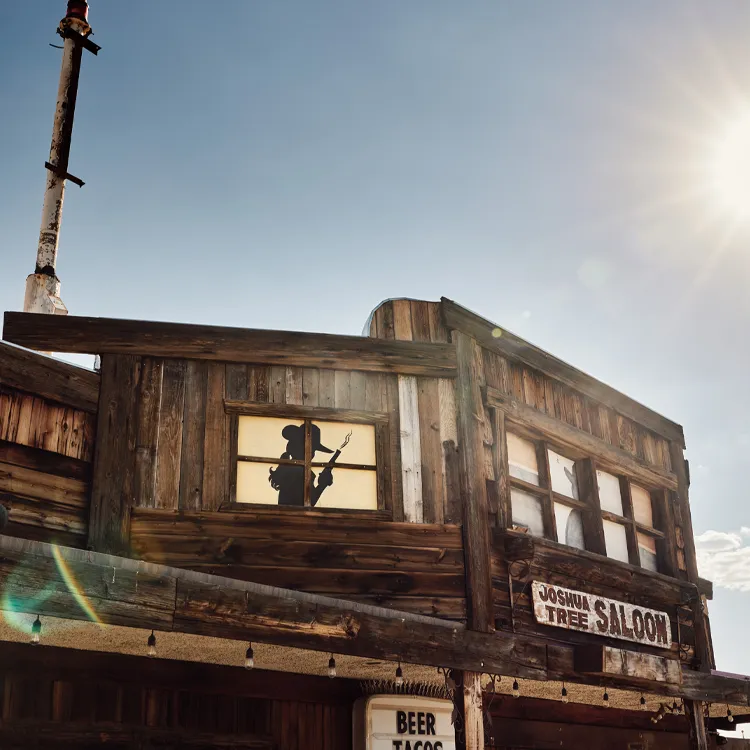


Ahead of your windscreen, more mountains. Orange-coloured evaporites, arches of sun-washed sandstone. You’ve seen it all before, you think. The Chihuahua Desert, Great Basin, Mojave, Sonora. Everything shimmers in the heat; the air is bone dry. Then it clicks: you’ve never been here, but you’ve been a hundred times. In films. Scenes flit through your mind. The Man Who Shot Liberty Valance. No Country for Old Men.
What you see is the real thing. The American West in giant format, the land of Billy the Kid. You drive through the desert for mile after mile. You’re not used to these dimensions. The heat, the powerful engine, the rolling idiom. But you keep driving. You don’t want the film to end. Just one more scene, one more bend in the road. The world unfolds in CinemaScope.
And then: the images begin to overlap, the false, the real. Great camera work. You forget you’re sitting in a car, you think you’re at the cinema. You think you’re in the film.

In Antelope Valley, a motel suddenly appears. A petrol station, a diner. Neon flickers, an American flag flies. A green convertible is parked in the lot beside a 1965 Mustang. The motel has a 1950s look, you expect James Dean to appear around the corner. But instead, you meet Jan-Peter Flack, the German owner of the Four Aces Movie Ranch. And that’s exactly what this small assembly of American architecture is: a backdrop within a backdrop – a film location in the desert built by Flack.
Lady Gaga and Britney Spears have made music videos here. Parts of the thriller Identity, starring John Cusack and Ray Liotta, were shot at this location, and Clint Eastwood directed here. Jan-Peter Flack’s reconstructed motel, bar, diner look deceptively real. You feel like you’ve stepped into an Edward Hopper painting.
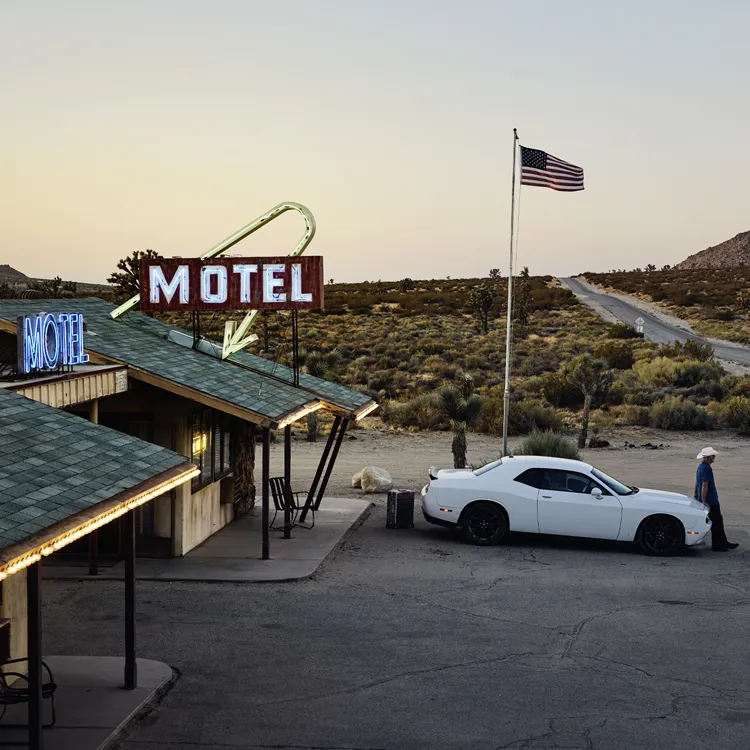

Flack is a professional when it comes to set design. A master scene-shifter with a well-established reputation in the industry. The Four Aces Movie Ranch is a gem. Anyone looking for a chrome-plated version of the West will find it served up here in distilled form, complete with ice machine and ketchup bottles from the good old days.
‘A good backdrop has to be perfect’, Flack says. ‘The design, the light, the shadow. The rusty sign banging in the wind. In the end, a backdrop has to be more true than reality. And then: bingo!’
The American West has you in its thrall – literally. You’ve got a Cody James on your head and black cowboy boots on the accelerator. You can’t help yourself; the stereotype is too strong. The illusion, the desire for stories. The purr of the engine is the sound of America.

You race through Nevada, flat as a board beneath a broad sky. Casinos appear, the first water slides in the desert. Very soon, Vegas shimmers on the horizon, its pyramids taller than the Egyptian originals. Fountains dance to Verdi in front of the hotels.
Backdrop wizardry? No, Vegas in 2024. An overstated overstatement, a superlative superlative. That’s the American West as well. The show, a revelation, the affirmation of fake.


You whiz through the Valley of Fire, where the mountains appear to smoulder beneath the blazing sun. The realm of lizards and scorpions. A desert in the best sense of the word, the hottest and most unforgiving on Earth. And the place we humans chose to establish the most audacious iteration of pop culture we could imagine.
This is where chancers hustle and desperados ride, where cowboys romp and Harleys roar – in a harsh natural setting. The plot is irresistible. Take one of the planet’s most hostile environments and turn it into a playground for money-grubbers and freedom seekers addicted to petrol.
Ultimately, it’s a modern interpretation of the age-old motif of humans in nature. Out here, the story has been taken to extremes; it has become the stuff of dreams, of incredible cinema. The magic of the American West – Coca-Cola in the desert, rock ’n’ roll in no man’s land.

Author

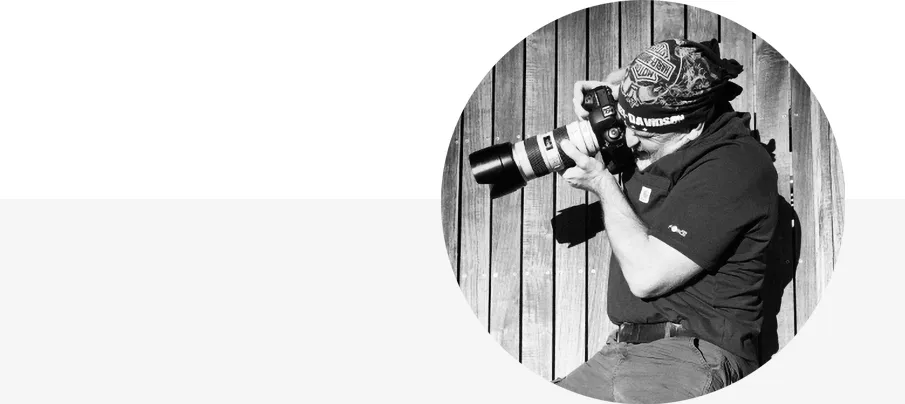
Photographer


Aluminium Collection
Travel companion

Discover the world with us


